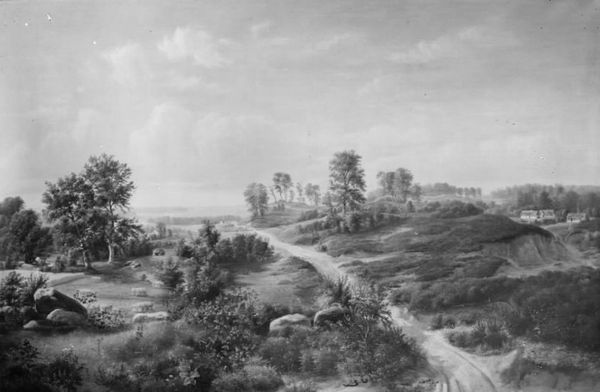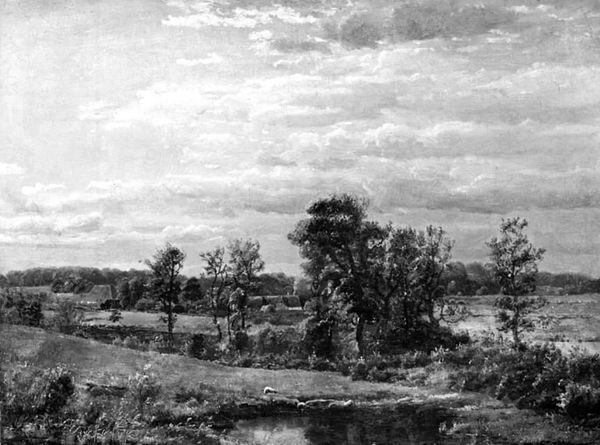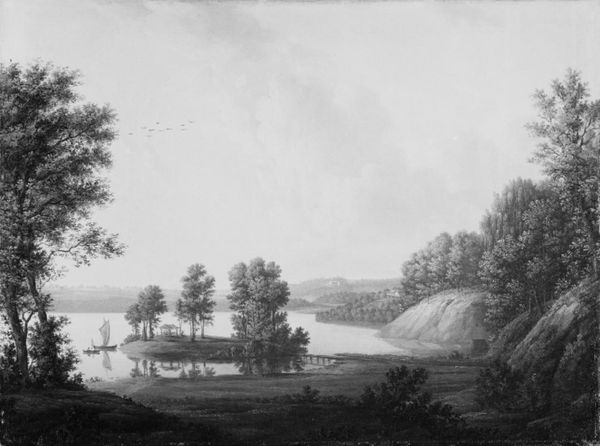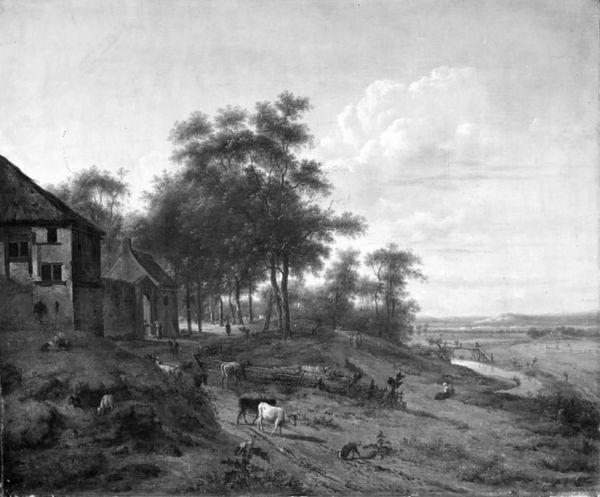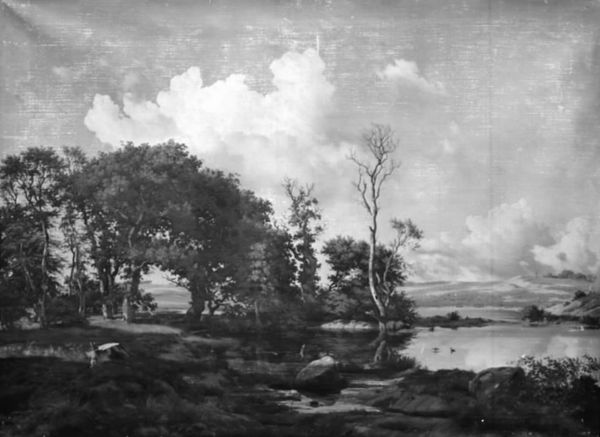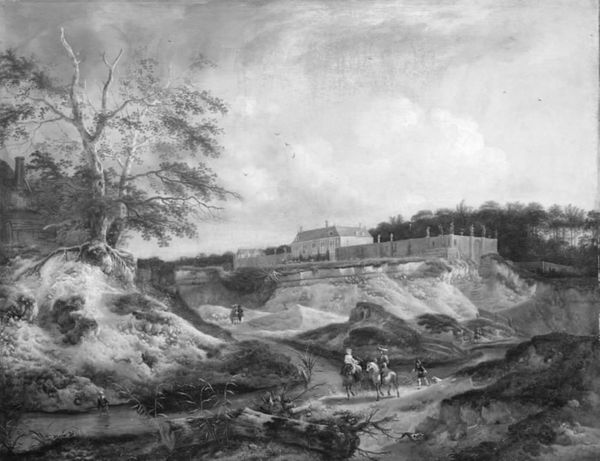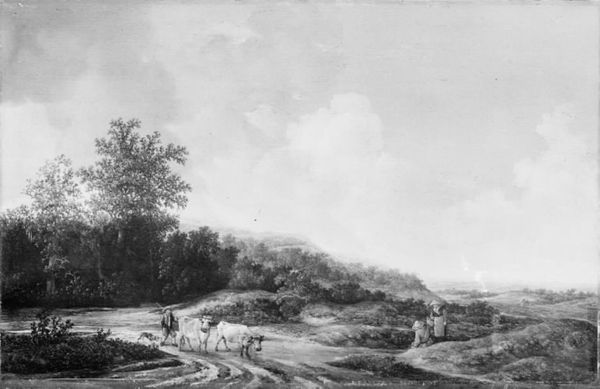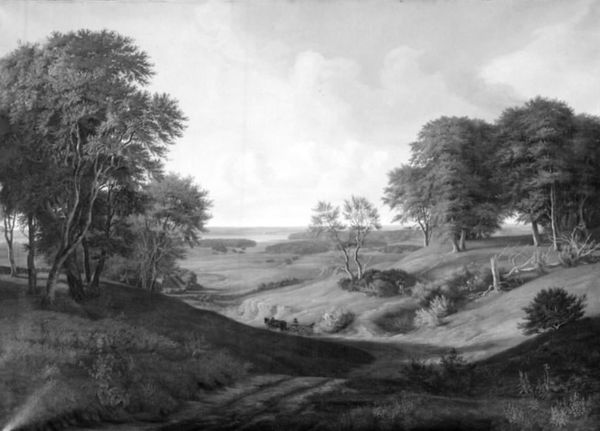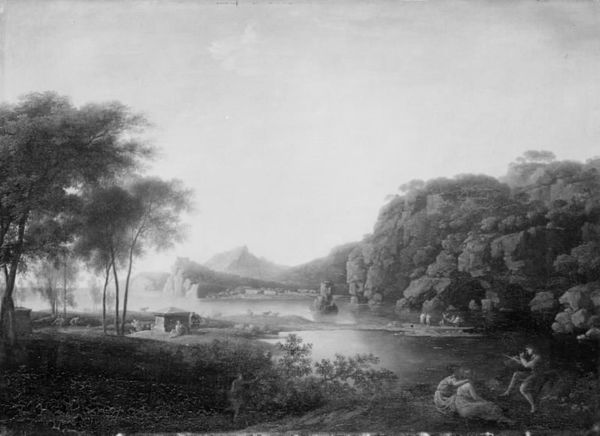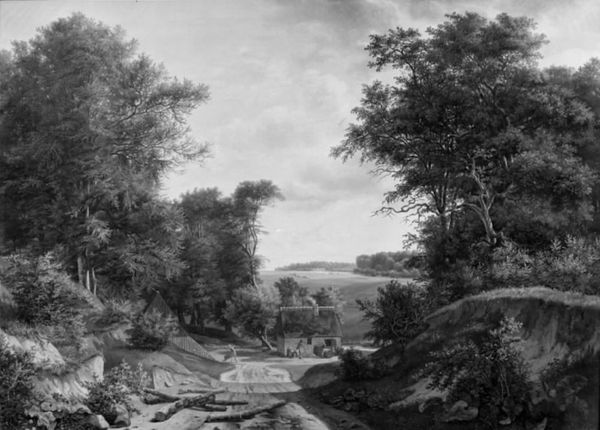
painting, canvas
#
painting
#
landscape
#
canvas
#
romanticism
#
monochrome photography
#
monochrome
#
skyscape
#
monochrome
Dimensions: 160 cm (height) x 220 cm (width) (Netto)
Editor: So, here we have "Nordsjællandsk landskab. I baggrunden den svenske kyst" painted by J.P. Møller in 1841. It's an oil on canvas, and it strikes me as quite melancholic, perhaps because it’s entirely in monochrome. What stands out to you in this piece? Curator: The most striking thing, perhaps because it lacks color, is its connection to a broader European Romantic sensibility. Landscapes were not simply records of places; they were statements about national identity and the artist’s subjective experience. What political undercurrents do you think this picture engages? Editor: That's interesting! I hadn’t considered it as a political statement. Given it's an 1841 landscape showing the Swedish coast in the background, perhaps it speaks to a sense of longing or connection with neighboring countries during a time of emerging nationalisms? Curator: Precisely. Remember that the 19th century was a period of significant national self-discovery. How does the absence of people in the painting impact its meaning, particularly considering the historical context? Editor: Without figures, the landscape feels more monumental, enduring, and perhaps even a bit idealized. It allows the viewer to project their own emotions and sense of belonging onto the scene. The Swedish coast in the distance hints at possibilities beyond the immediate Danish landscape. Curator: Good point! The scene promotes a shared, geographically rooted, cultural heritage. These kinds of depictions, circulated through art exhibitions and reproductions, played a role in shaping a collective imagination. How might it be seen differently today? Editor: Today, it makes me think about environmentalism. The untouched feel of the land contrasts so sharply with our current environmental concerns and perhaps it calls on the viewers to consider landscape's value. Curator: Indeed, shifting contexts radically transform the artwork’s public function and reception. It makes one wonder about art’s future role. Editor: I never would have considered that looking at a landscape. It’s fascinating to learn how a work's context influences our interpretations!
Comments
No comments
Be the first to comment and join the conversation on the ultimate creative platform.
